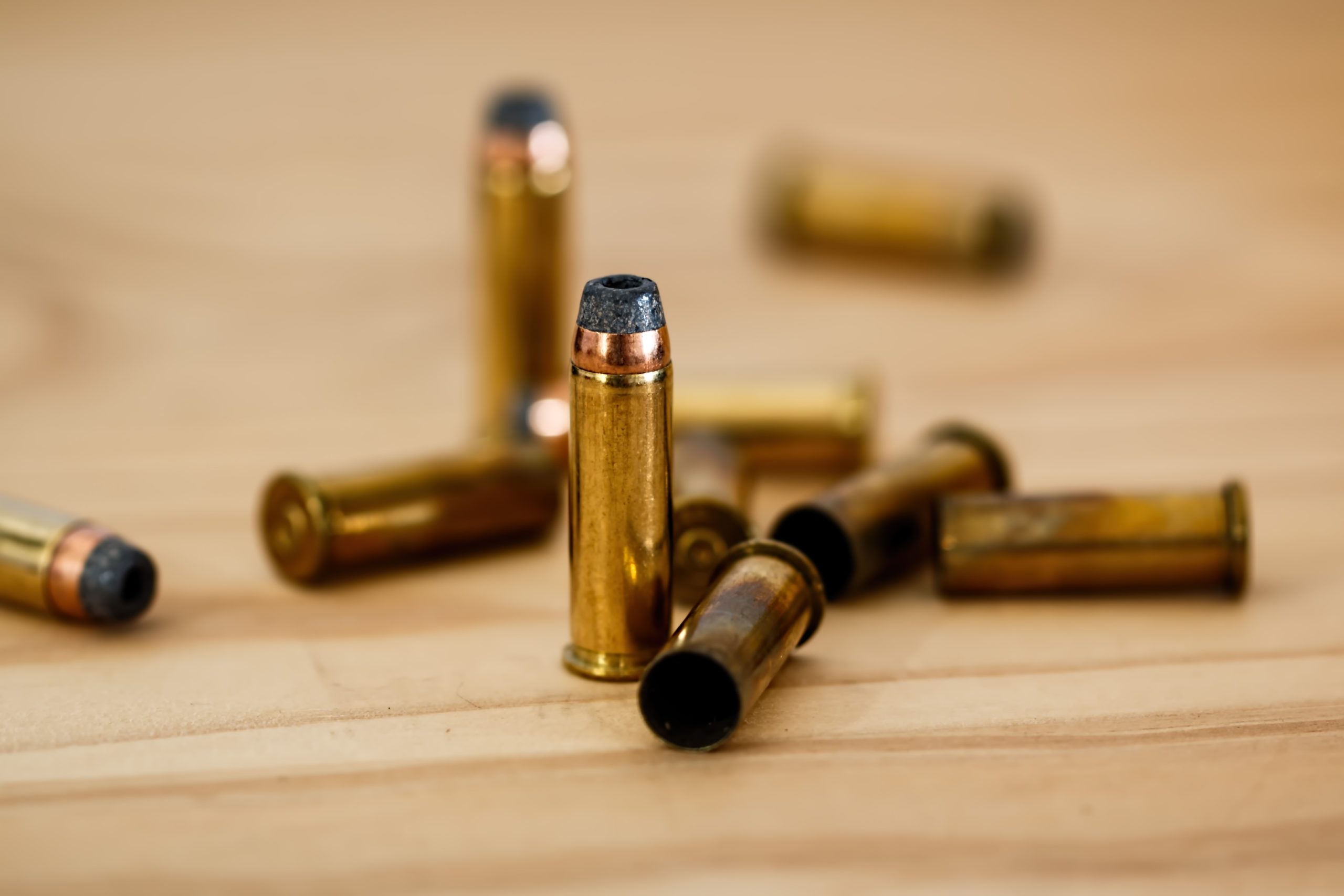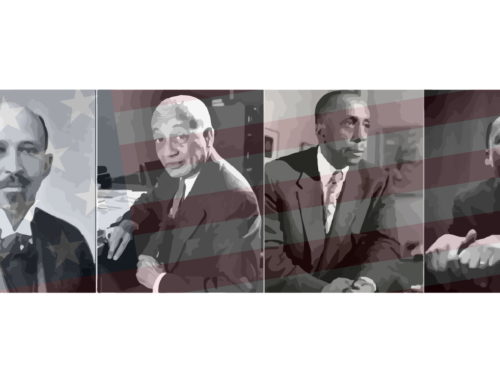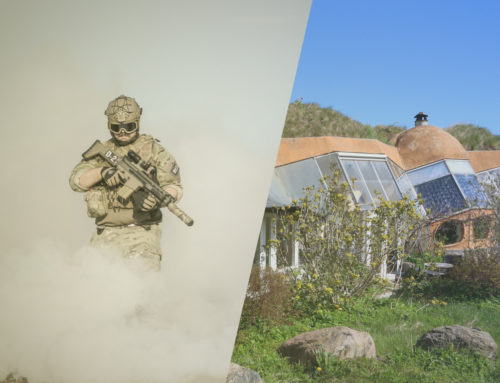By: Dennis Rohatyn
I sing, not of arms and the man, nor of the nuclear arms race, but of the human race against time—not the one we are destined to lose, but the one we have decided upon, as if to will the murderous means, without an indispensably necessary end. As death is inevitable, we have made it gratuitous.
Not war and peace, but war without end, and no peace, except beneath the earth. There are guns without butter, but there is no life without bread—except by a miracle.
AGAINST A SEA OF TROUBLES
Good news for a change—but bad news, as usual. According to the Associated Press (July 31), there’s a shortage of ammunition all over the United States, as major manufacturers are unable to keep up with high demand. Only the military is unaffected, since the Army supplies its own ammo, for all branches of the armed forces. However, police forces have been affected; Las Vegas PD is trying to “conserve” bullets, while Washington State is hoarding them so that their training program for new officers won’t be interrupted. Moreover, many of the firms that manufacture ammo have contracts with customers overseas, which they are obliged to fulfill before they can take care of the domestic market. (Australia is now their top client).
Conversely, sales of imported ammo have risen 225% in the last year, benefiting firms in Russia, South Korea, and the EU, respectively). While U.S. companies are doing everything they can to meet a huge backlog of orders, they can’t keep up, which in turn threatens many related activities: licensing fees, use of firing ranges, sport hunting permits, and club memberships, thus affecting both private and public sectors of the economy. The National Shooting Sports Foundation, which is always quoted in connection with any story about guns, gun control, the gun lobby, and the 2nd Amendment, estimates that 420 million rounds of new ammo will be needed to make up the current deficit (8.4 million new sales X 50 rounds per person).
So who makes all this stuff? The leading brand is Winchester, followed by a quartet of outfits (CCI, Speer, Federal, and Remington), all of which are owned by Vista Outdoor. (The latter claims that there is no shortage, and that they have been the victims of a disinformation campaign, but there’s ample evidence to the contrary, in all 50 states).
The next step is to find out more about these companies, along with their competitors and counterparts, here and elsewhere in the world.[1]
SURPRISING FALL OF THE HOUSE OF WINCHESTER
1. Winchester was founded in 1866, though the firm dates back to 1848. The original partners were Smith & Wesson, who formed their own company in 1852. They started out by patenting the W. repeating rifle, and went on from there.
2. Since 1935, Winchester has been a subsidiary of the Olin Corporation, a major chemical conglomerate. Olin made a vast fortune selling arms to European nations during WW I; their relationship with Winchester dates from that era, but they kept Winchester’s name intact for marketing purposes.
Along the way, Olin also partnered with Dow Chemical, and both firms became involved in arms deals all over the world, as well as producing chemical weapons, such as napalm.
3. Like most firearms made in the U.S., Winchester guns and rifles were made in New England—New Haven, to be precise. In 1980, employees bought the Repeating Arms company, to stave off bankruptcy. That didn’t work; by 1983, W. became part of Herstal (Liège, Belgium) and Browning (Ogden, Utah), still under Olin’s corporate umbrella, as the parent company.
In 2006, after 140 years of continuous operation, the factory in New Haven closed its doors. Olin sold the whole enchilada to Miroku, a Japanese arms manufacturer,[2] which still makes and licenses Winchesters through their subsidiaries, including Browning and Fabrique National, a subsidiary of Herstal. The only part of the gun business that Olin did not get rid of was the bullets! Those are still made in the U.S.A., at a plant in Oxford, Mississippi, six miles north of Rowan Oak (William Faulkner’s home, near the University of Mississippi) and at two smaller plants, one in East Alton, IL, the other in Harry Truman’s home town of Independence, MO. For awhile, made Winchester weapons in Columbia, SC, but in 2013 they moved the plant to Portugal. Browning sells them, but the models are made in Japan. Whereas, cartridges (.32 & .44 mm) are as American as Ole’ Miss, and all the good ole’ boys and girls who buy them, when they can get their trigger fingers on them. According to the wiki entry, “Winchester’s success was founded on a cartridge, the .44 Henry rimfire,” which they began making in 1866, when the plant opened. Over the years, they made other “successful cartridges” (.44-40, .30-30, .50 BMG, .270W, .308W, .243W, .22 Magnum, .300 Magnum, .350 Legend). To quote wiki, “in North America the .30-30. Is the best-selling hunting cartridge in history,” while the .308W, which is “not far behind,” is “one of the most popular hunting cartridges in the world.” (The weapon for which it was designed is equivalent to the 7.62 x 51 mm NATO used by the Army).
That leaves just one question: how many bullets do they produce each year, and how much (American) money do they make? According to Olin’s annual report, filed with the SEC (sec.gov), last year (2020) they had a backlog of $151 million in unfilled orders; as of January 31, 2021, they estimated it at $2.175 million. They write as follows: “The backlog orders are associated with contractual orders in our Winchester business. . . . During 2020, consumer purchases of ammunition increased significantly above normal demand levels. The increase in demand has been across all of Winchester’s commercial product offerings. Our ability to fulfill the backlog could be constrained due to limitations on our production capacity. Approximately 53% of contracted backlog . . . is expected to be fulfilled during 2021, with the remainder expected to be fulfilled during 2022.” In other words, half now, half later. While that by itself doesn’t tell us how much business they did, it does suggest a ball park figure of $2.0–$2.5 million, just for the backlog.
How many bullets does that equal? That depends on what type of cartridge you buy, and for what purpose (hunting, competitive shooting, self-defense). For the sake of argument, I picked two different kinds (cheap and expensive). The Winchester USA 5.56 NATO is a bargain: $19.99 for 20-round box, $82.99 for “value-priced” 100-round box, available at Big Five Sporting Goods. The cartridges come with “full metal jackets,” so you’re not missing anything, uh, essential. But if you want to go first-class, the Winchester 7.62 x 51 costs $32.99 for a 20-round box, also at Big Five—sorry, no “value-pack.” I have no idea what the retail mark-up on bullets is, but let’s ignore that. Instead, let’s construct a scenario, based on the figure used by the National Sport Shooting Association. Let’s be “lean and hungry” rather than fat and sassy, and assume frugality and cooperation are in full play. 8.4 million owners desire fresh ammo for their newly purchased guns. If half of them buy the 100-round value pack and share (or split expenses) with the other half, that’s 4.2 million rounds. In that case, 8.4 million buyers x $83.00 = $697.2 million in retail sales. That is the most conservative estimate imaginable. Thus the backlog is (at most) a tiny fraction of that amount. Of course, Winchester doesn’t get all of that, but even if the retailer takes (say) 30% off the top, that leaves $488 million in gross income, which represents 6.06% of Olin’s expected earnings for 2021, and 8.48% of what they earned in 2020. Not the bulk or the mainstay of their business, but an important component, nonetheless—one they cannot afford to neglect. Moreover, since it’s highly unlikely that everyone will buy the same (inexpensive) bullets, and that they share and share alike, even if geography (time and distance) permits it, it stands to reason that the annual revenue from cartridges of all types will be substantially higher than that—and we’re only talking about Winchester, not their competitors, both foreign and domestic. Whatever the actual number is, from year to year, it’s a lucrative business, one whose many fluctuations belie a continuity of growth and profit for those who have a primary stake in it. Those firms are part of the global military-industrial-prison complex—ever since the first shot was fired on Das Kapital Hill.
NEW VISTA, OLD NEMESIS
The other major “ammo” supplier is Vista Outdoor. Founded in 2015, Vista began as a “spinoff” from ATK (Alliant Techsystems), an aerospace corp. and defense contractor in Arlington, VA, which ran a sporting goods business as a sideline. Vista is located in Anoka, MN, suburb of the Twin Cities. That is both their HQ and the site of their #1 ammunition plant.[3] Since the day they became a separate entity, Vista has done a lot of wheeling-and-dealing, sometimes at a dizzying pace. They’ve bought (and sold) everything from eyewear and binoculars to high-powered rifles, rangefinders, ‘scopes, holographic [weapons] sights, night vision equipment, optical devices, telescopes, as well as paddleboards, hiking gear, camping gear, hunting gear, bicycle headlights, lanterns, helmets, goggles, GPS units, flashlights, skiing equipment—not stuff; stock options, with controlling interests—and very quick turnover. One day they own it, the next day they unload it. So much so, that their corporate identity seems to be that of a holding company— except for the bullets, which are a constant part of their inventory, along with their balance sheet.
However, to say they’ve had their ups and downs would be a massive understatement, if not a coy allusion to the fact that (through ATK) they were joined at the hip with Orbital Sciences (now part of Grumman), which makes rockets for satellites and space stations. You name it, Vista was into it—and out the other end. Accordingly, in 2018 gross earnings were $521 million; gross profit, 22.6%. In 2019, sales quadrupled ($2.1 billion), yet they lost $648 million, and were forced to sell two recent acquisitions (Savage Arms—there’s a name for you—and Stevens Arms) to reduce their debt load. Mismanagement? Or just bad luck, coupled with bad timing? Either way, the firm was unstable, volatile.
Then came the pandemic, which at first blush was an actuarial godsend (sic). To quote from the wiki entry, “in 2020, Vista Outdoor benefited from greatly increased ammunition sales. Vista also benefited from . . . a large increase in sales of outdoor-related products and sporting goods.”
However, the whole thing backfired (sic) when some (in fact, many) of their new customers and clientele, both individual and corporate, began boycotting Vista for being so heavily involved with (a) guns (b) ammo (c) the defense industry (d) the NRA (e) you name it. The very thing that shielded Winchester (partnership with Olin, long-time favorite of the Pentagon) left Vista open to attack for “not doing enough to stop gun violence” on the streets and in the schools. REI cancelled all their contracts with them, as did every bicycle retailer in Oregon, where cycling is a religion, plus Canadian chains MEC and Running Room, with a total of 144 retail stores between them. Local and state governments made a fuss, too.
The irony is that Vista tried to be all things to all people, which in a sense they were. Yet their purely mercenary motives made them suspect, as if they really believed in (and stood behind) their products, when in fact they were only juggling paper and moving dots on a screen, while engaging in one-night stands (sic) with as many different financial assets as possible. Whereas, whatever you may think of “old reliable” Winchester .73 (and his sidekick, Jimmy Stewart) at least you know what you’re getting when you give them your money in exchange for someone’s life—even if it’s yours that’s wasted.
Now for some hard (yet slippery and elusive) facts:
- To quote wiki, “as of 2019, Vista Outdoor earned about 50% of its profits from business units related to shooting sports, such as ammunition makers . . .”
- Furthermore, “Vista Outdoor has about 5,800 employees worldwide, with 4,000 in the United States. The company has manufacturing and support facilities spread over 11 American states, Puerto Rico, Mexico, and Canada. It has overseas sales and sourcing operations in Mexico, Canada, Europe, Australia, New Zealand, and Asia.”
- In 2015, Vista acquired Federal Premium, founded in 1922, with 1,000 employees on the payroll. Federal was located in Anoka, so Vista decided to incorporate there. Not only did they buy the munitions plant, but they also got the benefit of a long-standing reciprocal agreement with Lake City Army Ammunitions Plant, in Independence, MO.
Lake City (founded in 1941) is the Army’s No. 1 supplier of small arms; since 1942 Remington had a sweetheart deal with them, but with Remington on the skids, Vista (via Federal) quickly replaced them. - In 2018, Vista bought Remington Outdoors for $81 million, acquiring both the Remington brand name and an ammo plant in Lonoke, Arkansas.
- Meanwhile, in 2017 Vista moved its HQ to Farmington, UT (in the Four Corners area), thanks to generous tax incentives from the Utah state government. It didn’t hurt that their new CEO was previously the head of Hercules Aerospace, in Salt Lake City. They also built a new archery equipment facility in American Fork, a suburb of SLC.
But by then they had debts of over $1 billion, probably due to over-expansion, if not outright fraud and malfeasance. So they fired the CEO and brought in a new one, who promptly moved the firm back to Anoka, leaving all of their plans, projects and personnel in Utah behind, except for the archery factory (as Jack Kerouac told Allen Ginsberg, “America is an Injun thing“), which continued. - In 2016, Vista took over CCI (formerly Speer Ammunition, founded in 1951), in Lewiston, Idaho. They promptly built a new plant there, increasing the payroll from 1,135 to 1,500. According to wiki, “since then, Vista has been reducing its headcounts to save costs. This is necessary due to the sharp drop in ammunition sales that followed the election of Donald Trump.”
What the company forgot to mention was an assortment of labor problems in Idaho—strikes, boycotts, refusal to accept “early retirements,” and other headaches that threaten to make Vista bite old Speer’s last bullet—no relation to Albert Speer. - All of this happened before the most recent deluge, which suggests that even the pandemic couldn’t save Vista, since they were (and are) their own worst enemy, on and off the target range.
Yet it is difficult to gauge just what percentage of their income (such as it is) derives from making and selling cartridges, given their extreme financial recklessness coupled with a chaotic management style. These in turn make accurate and reliable book-keeping impossible. In their eagerness to stay one step ahead of the market, Vista is not only taking imprudent risks, but is in danger of running afoul of the law, even with obvious ties to the military-industrial-prison complex.
On a mundane level, they make a variety of related products, more or less simultaneously, at the plants that they (or their subsidiaries) operate: shells, shell casings, powder, smokeless powder, primers for reloading, etc; not to mention several distinct types of cartridge (shells, shotshells, rimfire, centerfire). Lacking precise figures, it’s impossible to determine how much of each, or what goes where. Vista has no business plan, except to grab and go—or let go. Their strategy, if any, is to rely on a few excellent holdings (such as Bushnell Optical, founded in 1948) to make up for all the mediocre, second-rate ones. Yet they can’t even take credit for that, since Bushnell (whose owner sold the firm in 1999, after which it was shunted around from one outfit to another) landed in ATK’s corporate lap in 2013, for $985 million in cash, two years before Vista was created. Those were the days of fiscal solvency, as well as business acumen. Whereas, Vista is neither fish nor fowl, yet they give off an odor of foul play, which is unmistakably fishy.
GUNS R US
1. Gun sales rose 15% in the first half of 2021, compared to the same period a year ago. The total (22.243 million) is calculated to break the record set in 2020, when 39.695 million were sold. That figure was a 40% increase over the previous year, when over 28 million were sold. Sales have topped 25 million every year since 2016, in fact. At the current rate, gun sales will reach nearly 45 million, a projected gain of 15% for the entire year.[4]
2. Half (50%) of all buyers are women. 40% are new (first-time) gun owners. 20% are black, and 20% are Hispanic.[5]
3. Illinois leads the nation in gun sales with 6.050 million (27.2% of the total). Kentucky is a distant second, with 1.651 million (7.4% of the total). Both figures are for Jan 1—June 30, 2021. However, in IL the per capita rate of gun sales is only (sic) 28.9% higher than in KY, just to put the matter in overall demographic perspective.[6]
4. Why those two states? Who knows? Geography may have something to do with it. The third highest volume of gun sales were recorded in Indiana, which (by coincidence) borders both states. For the first five months of 2021, the Hoosier state racked up 1.017 million sales; at that pace, IN would exceed 1.220 million in the first half of 2021. (Texas was fourth, with .916 million through May 31; if form holds, that would be 1.100 million in 6 months).
5. Comparing the six-month and five-month figures for all 50 states, plus D.C., P.R., and various territories and possessions, extrapolating from those results to the entire year, then dividing by the population of each state or geographic entity, we get the following per capita ratios for the states in question, plus others that should be of general interest:
A. The highest per capita rate is in Illinois (.9444). No surprise there. As expected, the second highest is in Kentucky (.7329). Utah (.3930) is third, Indiana (.3449) is fourth, while Alabama (.2115) rounds out the top five. At the other end of the scale, Hawai’I had the fewest gun purchases (9,761 for the first seven months of this year) and by far the lowest per capita rate, as well (.0115). Must be the climate.
B. The per capita sales rate for the ten largest states in the Union is as follows:
- California .0390
- Texas .0754
- Florida .0896
- New York .0251
- Pennsylvania .1225
- Illinois .9444
- Ohio .0837
- Georgia .0899
- North Carolina .0877
- Michigan .1138
As this chart reveals, the per capita rate in llinois is 7.7 times (771%) higher than it is in Pennsylvania, the second highest one on the “Top 10” list of most populated states. That per capita rate (.9444) isn’t just a stat. It means there is almost one newly acquired firearm for every permanent resident of IL, in addition to however many (millions) were already on hand, so to speak. Since the Chicagoland area has roughly ¾ (73.8%) of the state’s population, it is reasonable to infer that roughly the same percentage of fresh weapons is located there, as well. Indeed, the proportion may be far higher. In Illinois, more than in any other state in the Union, north or south, east or west, gunliness is next to godliness—within Windy City, it may be just the reverse. Ironically, in D.C., the site of so much violence early in the year, and a place that is surely no stranger to bloodshed, both past and present, the rate is nearly as low (.0164) as in Hawai’i. Go figure.
6. Geography may or may not be the manifest destiny of barbaric humanity. Nevertheless, analysts do agree that the principal causes of this “upsurge” are (a) the pandemic (b) the murder of George Floyd (c) the election and its aftermath, incl. the Capitol riots.
The dominant word on all sides is fear—the all-purpose explanation. If that sounds obvious, it is. If you have a better answer, let me know. I’m dying to tell someone about it. In the meantime, keep your ardor and your wit dry, even as your mind is burdened, and loaded with care:
Brother, can you spare a cartridge? Or buy me a bullshit-proof vest? Sister, spare me the lecture about the second Amendment. I know it by heart, yet have not lost my soul.
Man does not live by guns alone, but lone gunmen eat their words, leaving loneliness in their wake.
The madness must end now, or it will all come to an end–with no rights left to protect, except the last rites of recoil.
[1] Martha Bellisle, “Ammunition shelves bare as U.S. gun sales continue to soar,” apnews.com, July 31, 2021.
[2] Miroku is located in Nankoku, a fishing village (pop. 48,000) about 500 miles SW of Tokyo. Founded in 1892, their annual revenue is $3.904 billion (US). Their “flagship” weapon is the MK-38 Teague. By coincidence, Olin was also founded in 1892. Their home office is in Clayton, MO, a suburb of St. Louis. In 2020, their combined revenue from all branches was $5.758 billion, a decline of 5.75% compared to 2019. However, in the second quarter of this year their revenue increased by 79%; for the first six months of 2021, it rose 28.5% over the preceding 12-month period. At that pace, they will take in somewhere between $7.232 and $8.884 billion. Splitting the difference gives $8.058 billion, an increase of 40% over 2020.
[3] Anoka bills itself as “the Halloween capitol of the world,” in deference to a week-long celebration, intended to “discourage people from playing tricks or getting into trouble.” If only the Martians had landed in Minnesota, instead of New Jersey, Orson Welles might have prevented “War of the Worlds” from getting out of hand, even before Hitler treated Europe to a lengthy Walpurgisnacht.
[4] Source: Douglas McIntyre, “Gun Sales Reach 22.2 Million,” 247wallst.com (July 4, 2021), citing latest official FBI stats.
[5] Rosalina Nieves and Theresa Waldrop, “America is on a gun-buying spree,” CNN.com, June 4, 2021.
[6] McIntyre, op. cit. Their ballpark estimate of the gap is slightly lower (26.4%), but less precise.
A native New Yorker, Dennis Rohatyn took his PhD at Fordham. He moved to the West Coast in 1977. His works include “Out of My Mind,” “The Flight of Theory”, and “Cartesian Requiem.” He writes about everything, but his true vocation is the inhuman condition.
Image source: Close Up Photography of Brass Bullets via pexels.com










Leave A Comment